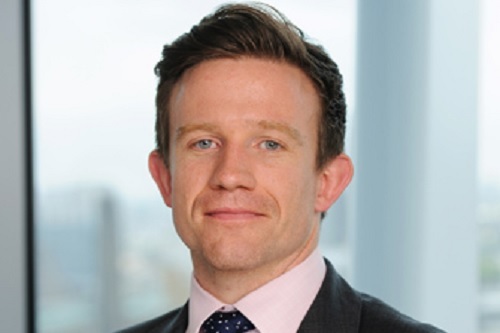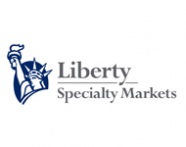How social evolution and new tech are affecting the fine art and specie market

Social evolution and new technologies are driving change in the fine art and specie market. Liberty Specialty Market’s Ross Drabble considers how London’s underwriters deal with emerging risks like interactive digital art.
In December 2018, the owner of a garage in the Welsh steel town of Port Talbot was astounded to discover that the latest work by guerrilla artist Banksy had appeared on the breezeblock wall of his garage. Ian Lewis told one national paper he could not sleep for fear the painting of a child playing in what looked like snow, but was actually ash, would be vandalised. He subsequently sold the painting for ‘a six-figure sum’ to an art dealer who, in May 2019, hired the services of engineers to remove the section of wall and transport it on a lorry to an art gallery.
Removing and transporting garage walls bearing the work of arguably the UK’s most well-known contemporary artist is not the sort of risk the London fine art and specie market would have seen 10 or 15 years ago. But as our society changes, those changes are mirrored in the art our society produces. For underwriters, that means we must be prepared for the new and the experimental to a degree not seen before in this most traditional class of business.
Take the growing impact of technology as an example: virtually all of us use computers and mobile devices as part of our daily lives. The same is true of artists. Most prominently, around 10 years ago David Hockney began using his iPad and iPhone to produce hundreds of colourful sketches and landscapes. So, how does one value this type of work for insurance purposes? Isn’t it really just a digital file?
Questions for underwriters These are perplexing questions for fine art underwriters. Perhaps an easier one is to consider the value of an electronic art installation. At a digital museum in Tokyo, visitors move from room to room in which vast interactive projections simulate waterfalls, rice paddies, floating lanterns and lily ponds to create an immersive experience. The exhibits require a bank of 520 computers and 470 projectors, which are powered by sophisticated algorithms that generate the images. While the full cost of the exhibit has not been made public, it has been reported that each individual piece of artwork cost in the region of $1m to $2m.
So how do you value such a risk? And where does the ‘art’ exist? Is it in the technology itself or the code of algorithms that live within the technology? Yes, there are physical assets in this type of exhibition but also intellectual property. How easy would it be to replace or reproduce the artwork? Would the artist even allow it to be replaced?
These are the type of questions that London’s fine art underwriters are now having to grapple with, and many of the answers are still unknown or without precedent.
New ways of collecting The manner in which people buy and collect art is also changing in fundamental ways. Electronic platforms and trading systems are increasingly being used to buy and sell fine art. With the age demographic of the art collector set to evolve towards younger collectors, the market is waiting to see how the next generation will buy its art – or whether it will buy art in the traditional sense at all.
Specie, which goes hand in hand with fine art, is not immune to this evolution. In 2017, The Guardian noted that 2001 was a tipping point, when people ‘decoupled from economic growth and material consumption’. Essentially, the paper argued, they started to value life experiences as opposed to ‘things’. Against this backdrop, attitudes among jewellery buyers are showing significant shifts. In 2018, the US Jewelers Board of Trade reported that 852 US jewellery retailers closed up shop, on top of the 817 retailers that shut down in 2017. Another 2019 report noted that millennials were less drawn to diamonds than previous generations or favoured cheaper lab-grown versions of the precious gems. Today, experiential gifts that look good on Instagram are increasingly the gift of choice.
Vaulting ahead Another interesting example of the changes taking place in the world of specie are vault risks. Historically, a vault contained cash or gold or some other valuable physical asset. Today, vaults are also used for less tangible assets such as crypto-currencies by way of a ‘cold storage’ method. The currency itself is held in an offline exchange whereby the mechanism of a hardware wallet provides an additional layer of security, decoupling the crypto assets from the internet and protecting against potential network-based attackers. A combination of high-level physical security and sophisticated layers of access controls combine to mitigate against the risk of theft or loss of assets kept on the exchange. Just one example of where the traditional ‘physical loss or damage’ specie market is able to adapt and evolve to new and changing valuable assets.
Blockchain more generally is expected to have a growing role in the fine art world. With provenance and authenticity ever increasing challenges for the art world and art insurers, blockchain potentially provides the all-encompassing solution to ensuring the protection of end-to-end transaction data. As with other areas of blockchain development, the reliability of data and market participation will dictate how effective this becomes in the future art market. Furthermore, the challenge of implementing blockchain in a unregulated market also remains.
These, then, are just some of the new challenges London’s fine art and specie market will face in the next few years. They are not insurmountable, but they do require some concentration and serious discussion. Data will be part of the answer – data that allows us to better understand both these risks and how customers present them to us. We can’t drive customer behaviour; but we need to be ready to react to it.
Fine art and specie may be one of the longest established classes of business in London, but that does not make its underwriters immune to shifting fashions and trends. As a market, we must maintain our relevance and our profitability. Thinking seriously now about these changes— before they become too pressing—will ensure we can do just that.
Authored by Liberty Specialty Markets Fine Art & Specie Underwriting Manager Ross Drabble
About Liberty
Liberty Specialty Markets offers specialty and commercial insurance and reinsurance products across key UK, European, Middle East, US and other international locations.
We provide brokers and insureds with a broad range of products through both the Company and Lloyd’s markets and have over 1,700 staff in approximately 65 offices. Liberty Specialty Markets was established in September 2013 bringing together Liberty’s company, syndicate and reinsurance operations into one combined operation, composed of three business units: Commercial, Specialty, and Reinsurance (Liberty Mutual Re). This integrated approach means brokers and clients can benefit from our global reach and operating efficiencies.
Liberty Specialty Markets is part of global insurer, Liberty Mutual Insurance Group, a diversified global insurer, formed in 1912 and headquartered in Boston, Massachusetts. Liberty Mutual is the 5th largest global insurer based on 2017 gross written premium, with over 50,000 employees in 30 countries and economies around the world. Our purpose is to help people embrace today and confidently pursue tomorrow. The promise we make to our customers throughout the world is to provide protection for the unexpected, delivered with care. We achieve this by offering a full range of personal, commercial, and specialty Property & Casualty insurance coverages. Our customers’ trust has earned us the 68th spot on the Fortune 100 list of largest corporations in the U.S., based on 2017 revenue.

